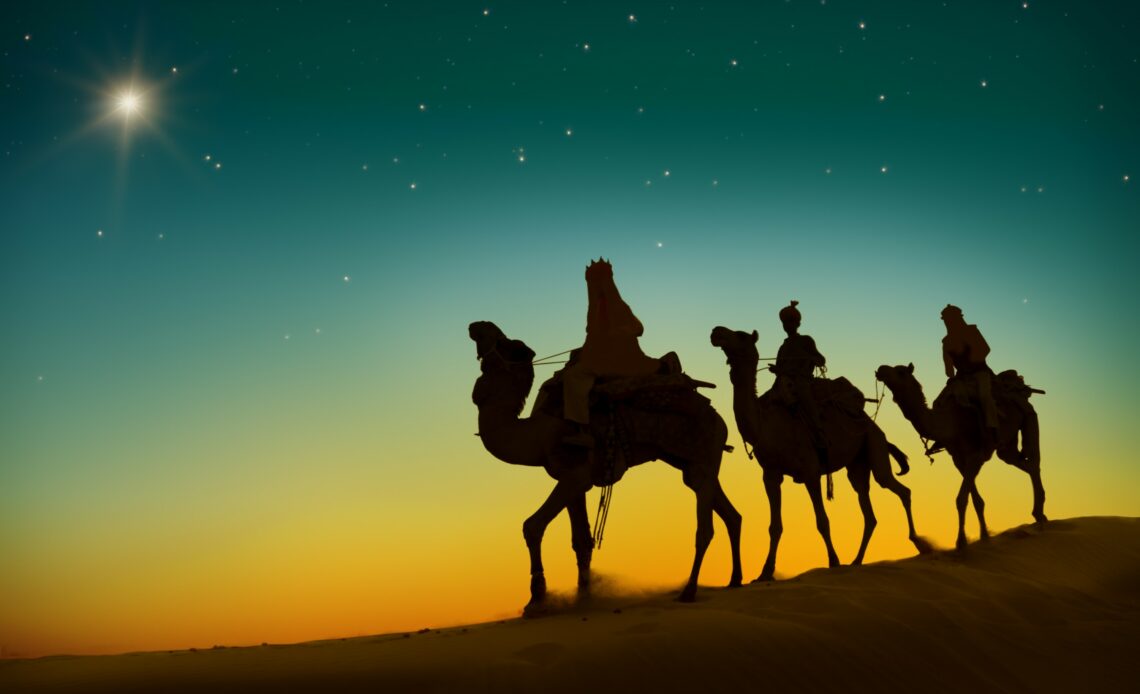Every kid grows up believing that there were three wise men that arrived on Christmas Day to worship baby Jesus. The trouble with this story is that it A) doesn’t actually fall in line with Biblical references, and B) it is the biggest myth surrounding the facts presented in the Bible.
Does that mean that there weren’t three wise men? No, that’s not what we’re saying here. What you should know is what the Bible teaches, what is historical fact for the day and age when people traveled during Jesus’s time, and the truth about the role of the wise men in the Christmas story.
How Many Wise Men Were There?
Funny story; the Scripture doesn’t actually specify how many wise men. It could have been three, but most Judaic kings kept several wise men in their courts to help make and support important decisions. Their role was to tell the king what was a good idea and what wasn’t, to “read” the stars and make predictions, and offer good counsel when the king was troubled.
The wise men that visited King Herod weren’t even his, and therefore numbering them wasn’t important at the time. The news that the wise men traveling from the East brought was more important to Herod than the number of men that needed shelter.
Matthew 2:1-2 says:
“1 Now when Jesus was born in Bethlehem of Judaea in the days of Herod the king, behold, there came wise men from the east to Jerusalem,
2 Saying, Where is he that is born King of the Jews? for we have seen his star in the east, and are come to worship him.”
Here you can clearly see that there is no mention of the number of wise men traveling after the star in the sky. It just says that they are wise men from the East.
The Possible Number of Wise Men Traveling and Those That Traveled With Them
The idea of three wise men traveling together and entirely by themselves bearing small gifts for the Christ Child is a neat image, isn’t it? However, that does not even come close to the reality of what really occurred then. If you set aside the unknown number of wise men, you have to take into account all that traveled with these men.
This is where it regularly astonishes most Christians, because they are taught to believe the three wise men story.
To travel with wealth and objects of value during Jesus’s time meant that you would be attracting a lot of attention from the wrong kinds of people. Wealthy individuals would be robbed and assaulted on any road, anywhere, at any time. These wise men, being truly wise, would not have left home without taking several camels, several servants, and even some foot soldiers as guards for protection. The camels would have carried food, water, and the precious gifts meant for the infant Savior. Supplies and raiment for everyone in the traveling party meant several more camels or horses.
Ergo, it wasn’t just the wise men traveling on three camels alone. For their safety, they would have traveled in caravan style with an entire accoutrement of people and things to discourage thieves and robbers from attacking them on the road. There would have also been at least one servant to assist each wise man to dress, a sort of valet if you will. This is why these wise men were often referred to as “three kings” because they traveled like royalty and brought much wealth and servants and camels and horses with them when they traveled.
In short, it would have been quite the opulent traveling party that was granted Herod’s ear and asked after the Christ Child. As for the actual number of wise men, as many as would have wanted to make such a once-in-a-lifetime pilgrimage would have joined the traveling band. It could have been as many as ten, twenty, or even forty.
Where the Idea of “Three” Wise Men Came From
The gifts the wise men bore were gold, frankincense and myrrh. Gold brought wealth and comfort to the family raising Jesus. Myrrh was frequently used as a medicine to cure most ailments of the day and help heal wounds quickly, a sign that the wise men wished nothing but excellent health upon Jesus and his human parents. Frankincense was used to perfume the body during rituals as well as burn on a hearth to make a home smell pleasant and inviting, a sign that the wise men wanted the home of the Christ Child and the child’s body and those that dwelt with him to smell pleasantly, something that would bring them favor with those around them. Each of these gifts could also be sold if and when a need arose for something else.
It doesn’t say how much of each of these precious items were given. For all we know, twenty small chests of coins and dozens of trunks of myrrh and frankincense were given. However, the fact that the gifts named were three unique gifts symbolic of wealth at that time is what ended up suggesting that there were three wise men.
See for yourself in Matthew 2:10-11:
“10 When they saw the star, they rejoiced with exceeding great joy.
11 And when they were come into the house, they saw the young child with Mary his mother, and fell down, and worshipped him: and when they had opened their treasures, they presented unto him gifts; gold, and frankincense, and myrrh.”
It still doesn’t say how many wise men, but people have long assumed the number was three by the three distinct types of gifts given in amounts not mentioned.
How the Wise Men Knew to Follow a Star and How Long Their Journey Really Took
Finally, it needs to be said that the wise men were not there with the shepherds and angels on the night of Christ’s birth. There is another general assumption that everyone just happened to drop by the stable and peer in the manger, but that’s not the case. There is also the star that the wise men followed.
Some of these wise men were watchers of the night sky. Some were followers of the words of the prophets. Together, they knew that a special star in the heavens would appear in the West, and bid them come. The words of the prophets told them where to go when following the star, and it wasn’t just a random following of a light in the sky.
The star would have been viewed by them in the East, because that is where they came from when they came west to Jerusalem:
Matthew 2:7,9-10 says:
“7 Then Herod, when he had privily called the wise men, enquired of them diligently what time the star appeared. …
9 When they had heard the king, they departed; and, lo, the star, which they saw in the east, went before them, till it came and stood over where the young child was.
10 When they saw the star, they rejoiced with exceeding great joy.”
The journey with such a large traveling party for safety and traveling from afar off would have brought them to Mary and Joseph’s home, not the manger, and it would have been months from the moment they knew to follow a star west from their eastern location.
One final verse indicates just how long that journey was, and how old Christ was when the wise men finally showed up with their entourage.
Matthew 2:16 states:
“16 Then Herod, when he saw that he was mocked of the wise men, was exceeding wroth, and sent forth, and slew all the children that were in Bethlehem, and in all the coasts thereof, from two years old and under, according to the time which he had diligently enquired of the wise men.”
So it took the wise men and their traveling party until Jesus was nearly two years old before they found him. That verse alone speaks to the inaccuracies of what a lot of people are taught about the wise men and the Christmas story, but now you know.


